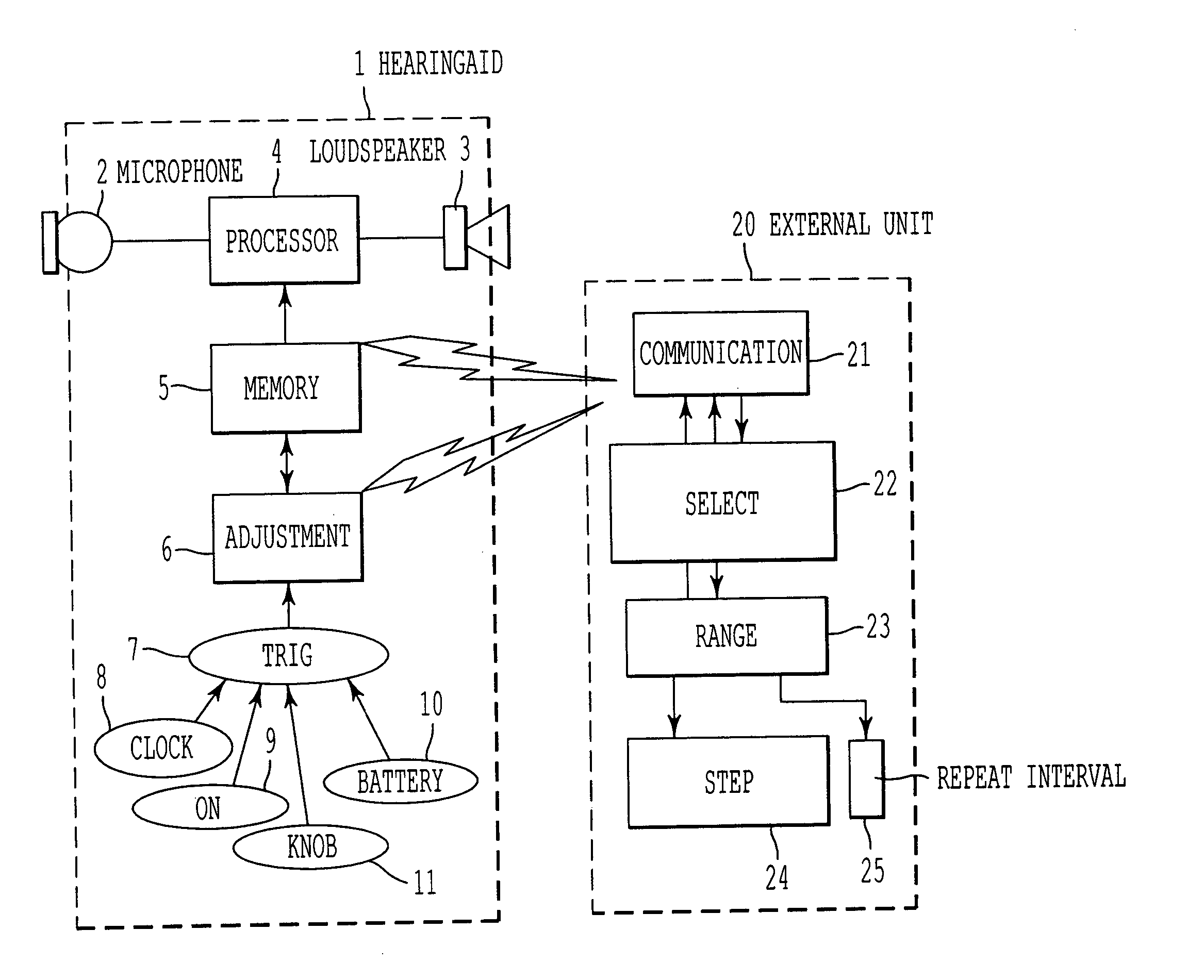Automatic adjusting hearing aid
- Summary
- Abstract
- Description
- Claims
- Application Information
AI Technical Summary
Benefits of technology
Problems solved by technology
Method used
Image
Examples
Embodiment Construction
[0015] Hearing aid 1 comprises at least one first transducer 2 (e.g., a microphone) for converting sound into an electric signal, at least one second transducer 3 (e.g., a loudspeaker) for converting an electric signal into sound, a first means 4 for processing and amplifying an electric signal from the at least one first transducer 2 and supplying the processed and amplified electric signal to the at least one second transducer 3, a second means 5 (e.g., memory) linked to the first means 4 for storing signal processing parameters, and a third means linked to the second means 5 for stepwise adjusting one or more signal processing parameters of the second means 5 from a starting point of a predetermined range to an end point of the predetermined range in response to successive trigger signals 7.
[0016] In at least one embodiment of hearing aid 1, the starting point of the predetermined range of one or more processing parameters is defined by an initial setting that is acceptable to a...
PUM
 Login to View More
Login to View More Abstract
Description
Claims
Application Information
 Login to View More
Login to View More - R&D
- Intellectual Property
- Life Sciences
- Materials
- Tech Scout
- Unparalleled Data Quality
- Higher Quality Content
- 60% Fewer Hallucinations
Browse by: Latest US Patents, China's latest patents, Technical Efficacy Thesaurus, Application Domain, Technology Topic, Popular Technical Reports.
© 2025 PatSnap. All rights reserved.Legal|Privacy policy|Modern Slavery Act Transparency Statement|Sitemap|About US| Contact US: help@patsnap.com


